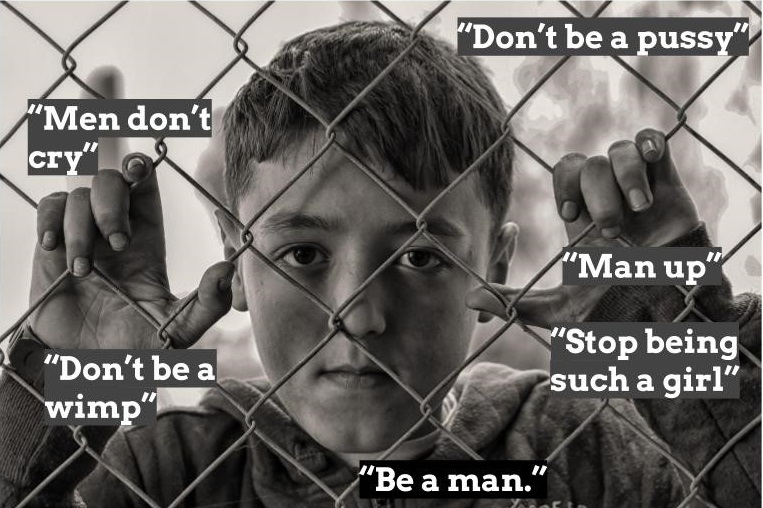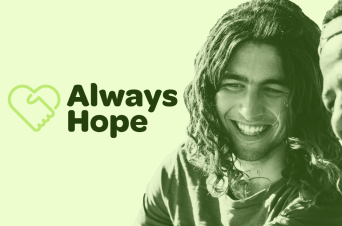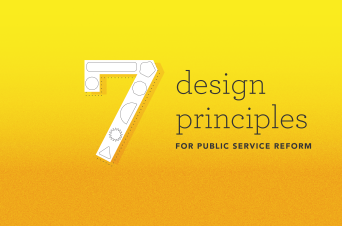
‘Be a man’ – toxic masculinity, social media and violence
blog | 02 Apr 2020
Take a look at our more recent work on
Our vision for public services
A report by Innovation Unit into youth violence in Greater Manchester reveals pressures on young males to conform to toxic images of masculinity, and the role of social media in this.
“I think a lot of them get into fights because someone looked at them wrong, it is just about what they think a man is.”
(Young Adult Probation Manager, Central Manchester).
Being a ‘man’ can be tough. There are rules about how you should dress, behave and present yourself; how you should deal with conflict and express your emotions.
We have spoken with over 350 people from communities impacted by violent crime across Greater Manchester. We talked to young people, their parents, their teachers, youth leaders as well as offenders themselves.
We found time and time again expectations of ‘being a man’ have led to more and more young males finding their way into serious violent crime. We also heard how this pressure to uphold a masculine image based on strength is becoming intensified through the increasing influence of social media.
What do the stats say?
The statistics tell a pretty clear story: perpetrators and victims of violence are overwhelmingly male.
Nationally, 74% of offenders and 69% of victims connected with serious violent crime were male in 2018. When we look at younger males, 87% of weapon users were male (2016/7). In Greater Manchester, 88% of perpetrators and 74% of victims were male in 2019.
Is masculinity really that bad?
It’s not that masculinity in itself is the problem, but rather that there is a version of masculinity in communities that is particularly toxic – where dangerous and toxic behaviours and attitudes are associated with ‘being a man’.
Throughout our research we heard young males using a script about becoming a man that says: ‘Do not express any emotions but aggression’, ‘reject anything feminine’ and ‘see retaliation as a strength’.
With expectations to act tough and suppress other emotions, young men are more likely to be violent, as one female pupil from Oldham describes:
“Boys don’t feel comfortable talking about violence, they don’t sit down to talk to each other, which means they can explode because they can’t show their emotions.”
Pressure to ‘be a man’ is not new, so what’s changed?
As we discussed with Matthew Wright on his talkRADIO show, the pressure to be a man has always had toxic elements. But our research found that social media has intensified this pressure.
Before social media, young boys had times when they could let their guard down, calm down and cool off, and not have to conform to a hard man image. Now, because of the 24/7 nature of social media, there is a pressure to never stop performing the hard man role, and to keep curating and recreating online, a public image of masculinity that is associated with violence and aggression.
For example, during our research, we frequently heard about young males trying to uphold a pseudo masculine image online.
“You see these 14-year-olds kids standing next to these cars and they can’t even drive. It is all a status thing saying ‘I am this person’” (Trafford youth worker)
“There are so many images of people with BMWs and a Vodka bottle with fire on it on holiday, like they have made it. But that is not the reality behind the screen and it just creates so much pressure” (Bolton youth worker)
The more people feel they need to fit in with a macho masculine image, the more pressure this creates for others:
“The problem is that you have everyone telling you that you need to be a certain image, but then you have no means to get there. So they end up looking for quick money [drugs] to get them there… there are things you are supposed to have, but when there is no job and you don’t go to college, it is like good luck!“ (Bolton youth worker)
Social media and younger children
Smart phones and social media are widely used by younger children at about the time they start secondary school. This means that young children are having to contend and navigate this pressure:
“The expectations are …. you are supposed to have this phone, that piece of clothing etc. which is not that much different. But the age and stage has been shifted to much younger – and physically and mentally the kids can’t cope. I think social media has definitely created this pressure earlier, where it might have 16 to 19 year olds … now it is nine to 13 year olds.” (Bolton Youth Worker)
The access to online content can be both brilliant and brutal. It offers so many social and educational opportunities which generations before could only hope for. At the same time it also exposes many young people to dangerous and worrying content that can be sexual, violent, or bullying. Many young people lack the maturity, confidence and emotional intelligence to cope and keep themselves safe.
How are young females impacted by this pressure to ‘be a man’?
Young females are often victims of this masculinity image pressure, with young males often fighting over girls, as if they were property.
Some girls are asked by boys to carry weapons or them: “Girls carry knives but don’t use them… if you have a relationship with a dodgy boy you’re going to get dragged in… girls will do anything to please their boyfriends and they have pictures as blackmail”
Sometimes boys will use girl’s social media accounts as a means of surveillance “You notice a girl starts following you on social media, and you think great. When really it is a guy using his girlfriend’s account to spy on you” (Salford young offender). And we met girls who were well aware that boys at their school used social media accounts to ‘rate’ the attractiveness of girls in their school.
So what are the solutions?
We are not saying social media is the sole cause of increasing youth violence. There are numerous other environmental factors such as a lack of opportunities and role models as well as family and peer influences. However, social media can exacerbate these circumstances, particularly when it comes to intensifying toxic masculinity pressure and the relentless pressure of having to ‘be a man’.
We have a few ideas of how to address this issue of toxic masculinity.
One lies in changing the curriculum in school to include: how to navigate the pressures of toxic masculinity and femininity. Lessons could include topics around male identity, fear, status, conflict management, emotional awareness, unhealthy relationships, safe social media and understanding the consequences of getting involved in serious violence.
A similar example where this has worked well is in Chicago with their “Becoming a Man programme (BAM)”. BAM is a school-based group counselling programme that guides young men between the ages of 11-18 years old through a range of mentoring, role-playing and group exercises. It currently serves 8,000 young men in 140 schools in the US and has values such as positive anger-expression, respect for womanhood and accountability.
Some places in the UK are interested in BAM. We want to see the programme adapted to the UK population and school system, and properly trialed and evaluated in the UK including how it can be delivered in single-sex groups and what the equivalent programme would be for teenage girls. We also want to see programmes targeted at primary-secondary school transition involving parents and children in courses designed to keep young people safe online and offline.
If you think these programmes could be what is needed in your community then contact Jessie Ben-Ami
You can read our full report here
See our more recent work

Always Hope: Transforming the lives of care experienced young adults in the…
Care experienced young adults (18-25 years old) are over represented in the prison system; approximately 25% of all adult prisoners have had experience of care, compared to 1% of the general population.
25 Oct 23

The future of UK public services: the Innovation Unit vision
06 Oct 23

Bridging the Gaps
29 Jul 20